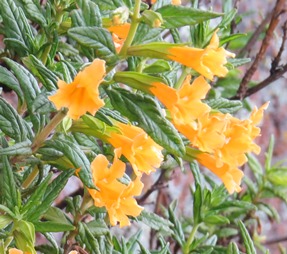
Objective: Use the design and layout of the nursery to reduce opportunities for introducing contamination into plant stock.
What you need to know: The propagation and production areas of the nursery need to be maintained as clean areas. Nurseries also have areas that are not clean, such as quarantine areas for potentially contaminated plants and contaminated areas where materials from outside of the nursery arrive. Organizing the nursery layout to separate clean and contaminated areas and activities will help reduce opportunities for spreading contamination into clean areas.
Best practices:
6.2.1. Assess the areas adjacent to the nursery to determine whether they could serve as sources of contamination via flowing water, mud flows, blowing soil or debris, or splash from roads or vegetation. Install drainage, fencing, and barriers where appropriate to mitigate contamination from off-site sources.
6.2.2. Consider worst-case conditions (heavy rainfall, high winds, etc.) when designing mitigation measures such as drainage to ensure that these measures will be effective across the whole range of likely weather conditions.
6.2.3. Maximize separation between clean and potentially contaminated areas. Don’t situate contaminated areas (e.g., trash bins, dirty pot piles) where runoff, splash, or wind can move contaminated soil, water, or debris into clean areas. Separation between clean and contaminated areas should be at least 3 m (10 ft). Solid barriers that prevent movement of contamination may be used where this minimum separation distance cannot be achieved or where other circumstances warrant.
6.2.4. Use barriers and controlled access to restrict movement from contaminated to clean and require sanitation at entry points into clean areas.
6.2.5. Keep the size of contaminated areas to a minimum. Use solid surfaces, catchments, and drains to capture and remove contaminated soil, debris, and runoff to minimize opportunities for spread into clean areas.
6.2.6. Use closed bins or dumpsters for disposal rather than cull piles that can serve as sources of contamination. Areas for handling and discarding culls should be outside of the nursery clean areas and should not be located where wind or flowing water could carry contamination into the nursery.
6.2.7. Organize the flow of work in the nursery so that contamination from old plants, containers, and soil won’t be spread to clean materials and areas.
6.2.8. Consider how and where deliveries are made and avoid having contaminated vehicles and equipment enter clean production areas. Any vehicles entering clean areas of the nursery should be free of soil and debris.
6.2.9. Use signage at all access points that specify decontamination procedures required before entry. Use signage to emphasize clean working practices.
6.2.10. Establish wash and decontamination stations that are easy to use at all entrances to clean areas.
6.2.11. Make it easy for workers to follow clean production practices. Install hangers to keep hose ends off the ground. Have sanitation supplies such as brushes and disinfectant sprayers staged in convenient spots in working areas or have workers carry these supplies on their toolbelts. Use an easily cleanable cart equipped with sanitation supplies that can be used as a clean working surface in the nursery.
6.2.12. Potting benches and similar areas that need to be decontaminated frequently should be made of nonporous materials that are easy to clean and sanitize.
3/5/2021 - minor editing to 6.2.3. for clarity.